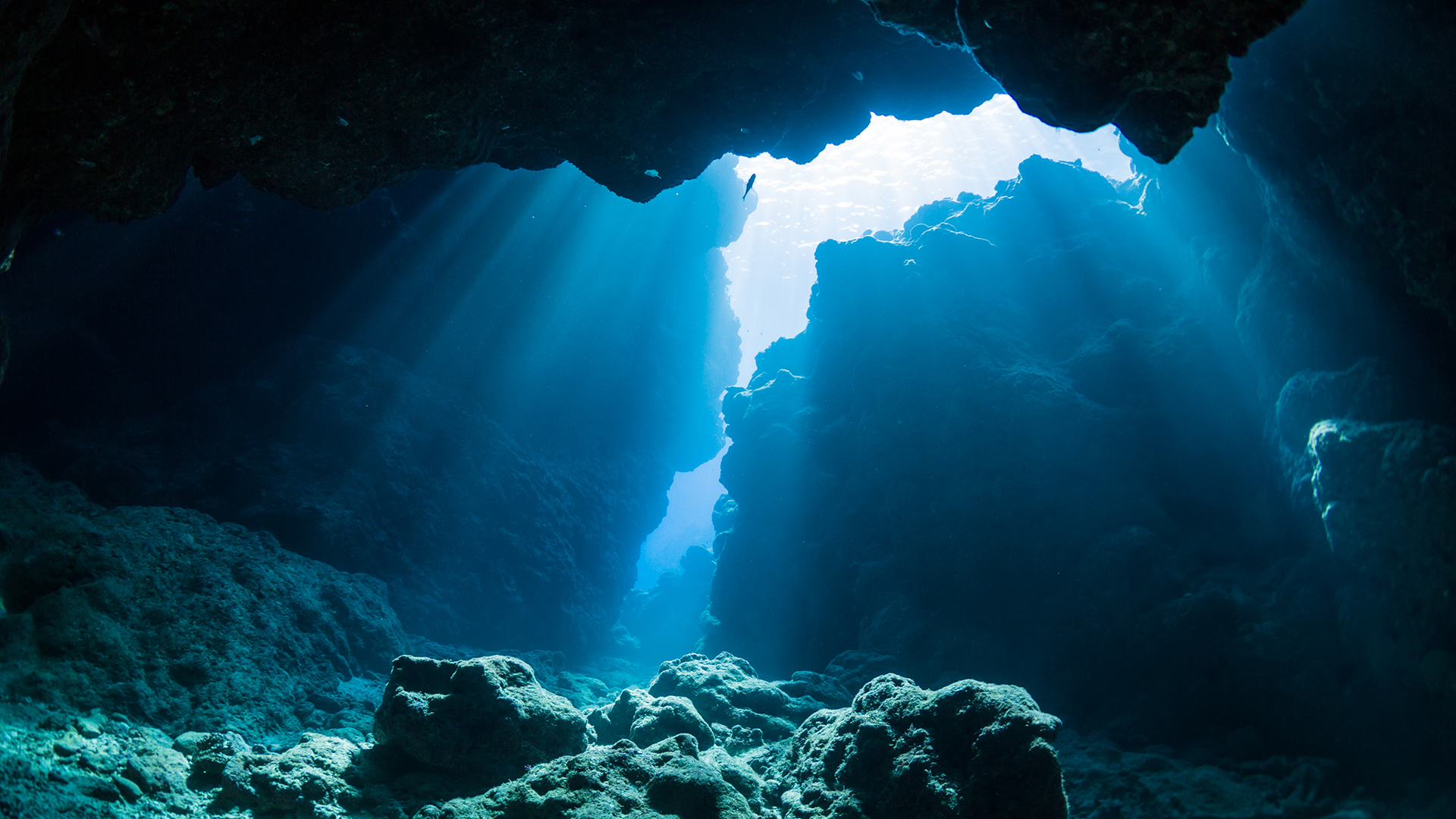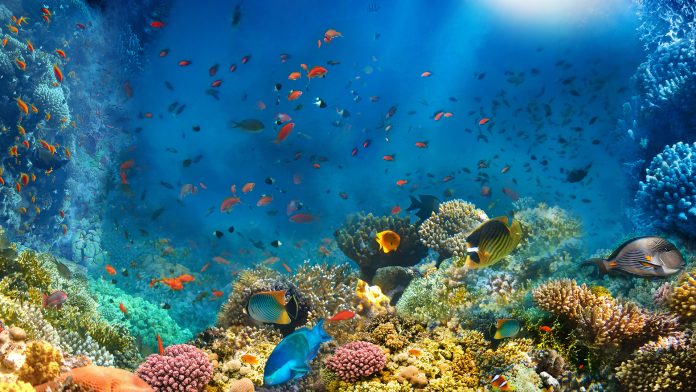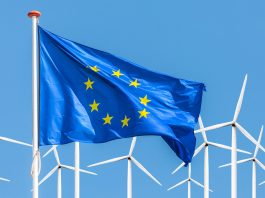The ocean is a vastly important resource with an unfathomably large biodiversity. As humans look to take the minerals we need, it is up to organisations like ISA to ensure no harm comes to the marine environment.
The seabed holds various materials that are becoming increasingly important for the green transition, such as copper, gold, manganese, cobalt, and more. As demand for such materials increases, it is not unreasonable to expect ventures to look to mining these marine environments.
The International Seabed Authority (ISA) is a UN-established international organisation dedicated to the monitoring and protection of global marine environments in mineral-resource related activities.
The Innovation Platform’s Assistant Editor Matt Brundrett sat down with Jaimie Abbott, Communications Specialist at ISA to find out more about their work.
How does ISA help protect marine biodiversity in offshore mining operations?
Under UNCLOS, ISA has the mandate to protect the marine environment from harmful effects that may arise from activities in the area. For the last thirty years, ISA has developed and implemented a regulatory framework that ensures that activities in the area are carried out in a precautionary and environmentally responsible manner.
ISA’s efforts towards ensuring the protection and sustainable use of the area and its resources are demonstrated through the development, implementation, and review of regional environmental management plans (REMPs). REMPs aim to provide the relevant organs of ISA, as well as contractors and their sponsoring States, with proactive, area-based, and other management tools to support informed decision-making processes that balance resource development with conservation. They also provide ISA with a clear and consistent mechanism to identify particular areas thought to be representative of the full range of habitats, biodiversity and ecosystem structures and functions within the relevant management area.
More than ten years ago, ISA established an environmental management plan in the Clarion-Clipperton Zone. The plan includes a network of 13 areas of particular environmental interests covering 1.97 million km2 where no mining will be allowed. Further work is underway to establish similar plans in the Mid-Atlantic Ridge, the Indian Ocean, and the Northwest Pacific Ocean.
Under the exploration regulations, contractors are required to conduct environmental baseline studies, monitoring, and impact assessments.
ISA is also tasked with encouraging and promoting marine scientific research in the area, and in 2020 its 168 Member States unanimously adopted a comprehensive Action Plan for Marine Scientific Research to drive the work in this sphere. The Sustainable Seabed Knowledge Initiative of ISA is a flagship initiative for the implementation of the Action Plan, particularly focusing on generating new deep-sea biodiversity knowledge and enhancing deep-sea biodiversity assessments in support of the protection of the marine environment based on the best available science.
How does the ISA involve local communities in decisions and contribute to protecting their livelihoods?
Since its establishment 30 years ago, ISA’s decision-making process has been taking a multilateral and consensus-based approach, according to the rules and procedures established by UNCLOS and the 1994 Agreement. All state parties to UNCLOS are automatically members of ISA, which currently comprises 168 states and the European Union.
As of May 2024, ISA has 106 observers, including 29 observer states, 32 intergovernmental organisations, and 45 non-governmental organisations. The Assembly, the supreme organ of ISA, is attended by the Member States and observers. All can take the floor and express their views and positions. In addition, several stakeholder consultation processes have been undertaken, including as part of the process for the development of the current draft exploitation regulations (Mining Code) and one for the draft REMP for the northern Mid-Atlantic Ridge.

How does the ISA collaborate with scientists to safeguard deep-sea ecosystems from mining impacts?
In 2020 the ISA adopted an Action Plan for marine scientific research that serves a global agenda to progress deep-sea science.1 It comprises 6 strategic research priorities, including one that focuses specifically on enhancing scientific knowledge and understanding of the potential impacts of activities in the area. Under this strategic research priority, the Secretariat facilitates the further elaboration of scientific approaches and tools for cumulative impact assessments. Its continued work will advance the understanding of cumulative impacts from future exploitation activities and other stressors on different ecosystem components.
Since adopting the Action Plan for marine scientific research, the Secretariat has organised 29 events to promote scientific deep-sea research, encompassing online and in-person workshops, webinars, information series, and side events in global fora involving over 1,000 experts from all over the world. Additionally, 44 strategic partnerships were forged to deliver the MSR Action plan, and since 2020, 19 Member States and the European Union have provided support.
How does the ISA ensure equitable benefits for local populations in mining areas?
Deep-seabed mining represents a frontier of human activity with the potential to unlock vast mineral resources located on the ocean floor beyond national jurisdictions. As technological advancements pave the way for the exploration and extraction of these resources, questions regarding equitable benefit-sharing and environmental sustainability have come to the forefront of international discourse. ISA plays a key role in regulating deep-seabed mining activities and ensuring that the benefits derived from these activities are shared equitably among all members of the international community. Activities under the competence of ISA, including mining activities when they are authorised by member states, take place very far away from land and human communities. The four key points for this are:
- Mining areas are not located near local populations:
The international legal agreement known as UNCLOS, along with its 1994 Agreement, states that the ocean floor beyond any nation’s borders is owned by everyone on Earth. This idea is specifically mentioned in UNCLOS (Article 136) and more detailed in the 1994 Agreement’s introduction, stating that no single nation or local community owns these ocean resources – they belong to all of humanity. Consequently, the ISA oversees these areas to ensure that everyone benefits fairly rather than focusing on the needs of specific local groups. ISA has been established with the mandate of being the main body for overseeing activities such as seabed mining, if and when it will occur, in these international areas. Additionally, UNCLOS (Article 140) stresses that the benefits of activities in these international seabed areas should reach all humans, regardless of their country’s geographical location and whether they are coastal or landlocked. It also highlights the need to pay special attention to the requirements of developing countries and those not fully independent or self-governing. - Exploitation has not commenced yet:
No deep-seabed mining activity has commenced anywhere in the world. - Sharing of benefits contemplates both monetary and non-monetary benefits:
UNCLOS and the rules set by the ISA focus on ensuring that benefits from deep-seabed mining, both money and other types, are shared with everyone globally. As part of the development of the exploitation regulations, ISA is creating a Common Heritage Fund to support learning and skill-building about the ocean. - Collective Benefit System with Special Considerations:
The ISA is dedicated to managing deep-seabed activities (prospection, exploration and exploitation) so that they benefit all of humanity. Its main goal is to make sure everyone around the world benefits fairly, but it also pays special attention to the needs of developing countries and small island states.
The ISA works to ensure that its approach to sharing benefits is fair, inclusive, and promotes sustainable development worldwide.
Overall, the ISA operates under a detailed set of rules provided by UNCLOS and the 1994 Agreement, which guide it in regulating seabed mining. This regulation aims to distribute both monetary and non-monetary benefits fairly, even though the mining may not occur near local populations.
What can you tell us about the DeepData database and its purpose?
The ISA’s DeepData database was launched in 2019, replacing and consolidating previous iterations of the databases maintained by ISA, namely POLYDAT and the Central Data Repository (CDR). In launching DeepData, ISA made publicly available for the first time the biggest and most complete global repository of environmental data and information collected in areas beyond national jurisdiction.
DeepData contains environmental data, which are publicly available, including biological, physical, and geochemical parameters of the marine ecosystems from the seafloor to the ocean surface. It also contains maps, photographs, videos, graphics, and relevant publications in peer-reviewed journals from ISA contractors. It has since served as an effective tool to facilitate the sharing of environmental data in an open and transparent manner, thereby advancing the scientific understanding of the area.
Today, ISA is the custodian of over ten terabytes of data through DeepData, representing the largest repository of seabed data in the world. Its data inventory has contributed significantly to the management of the area, including the development of REMPs.
ISA’s efforts towards advancing data and information sharing through DeepData were further promoted through strategic partnerships with other UN agencies and scientific organisations. For instance, the Secretariat launched the AREA2030 Initiative in partnership with the International Hydrographic Organization (IHO) to facilitate the high-resolution mapping of the Area by 2030.
ISA is also the first UN organisation to serve as a node for the Ocean Biodiversity Information System (OBIS) of IOC-UNESCO, sharing its biodiversity data with the OBIS network through DeepData. In terms of its contribution to OBIS, DeepData records currently account for over 89,000 occurrence records or 15% of data collected at depths below 3,000m.
What other key achievements or projects can you tell us about, and why are they significant?
ISA has been pioneering women’s empowerment for experts in deep-sea affairs from developing countries. The tangible activities the ISA launches in this domain impact the careers and lives of those experts. For example, ISA Contractors have a legal obligation to provide and fund training opportunities for personnel from developing States and those of ISA.2 This, combined with the other transformative action ISA facilitated in this domain, has enabled to build the capacity of more than 1,000 individuals from developing States since 1994. In addition, to date, 19 contractors pledged to allocate half of their placements in the Contractors Training Programme to women scientists. The women experts participating get training on the most advanced science and technology development in the field of the deep sea. Last year the ISA also launched a global mentoring programme that matches seasoned mentors with mentees from developing states.3 The pairs embarked on a one-year journey during which the mentor guided the mentee in her personal, professional, and scientific development. In the recently established ISA-Capacity Development Alumni Network4 (iCAN), professionals who enjoyed one of the ISA’s women empowerment initiatives shared their stories of how such an initiative transformed their lives, and a few experts were hired afterwards.
References
- ISA | Marine Scientific Research
- ISA | Contractor Training Programme
- ISA | WIDSR She Mentoring Programme
- ISA | Capacity Alumni Network
Please note, this article will also appear in the 18th edition of our quarterly publication.









